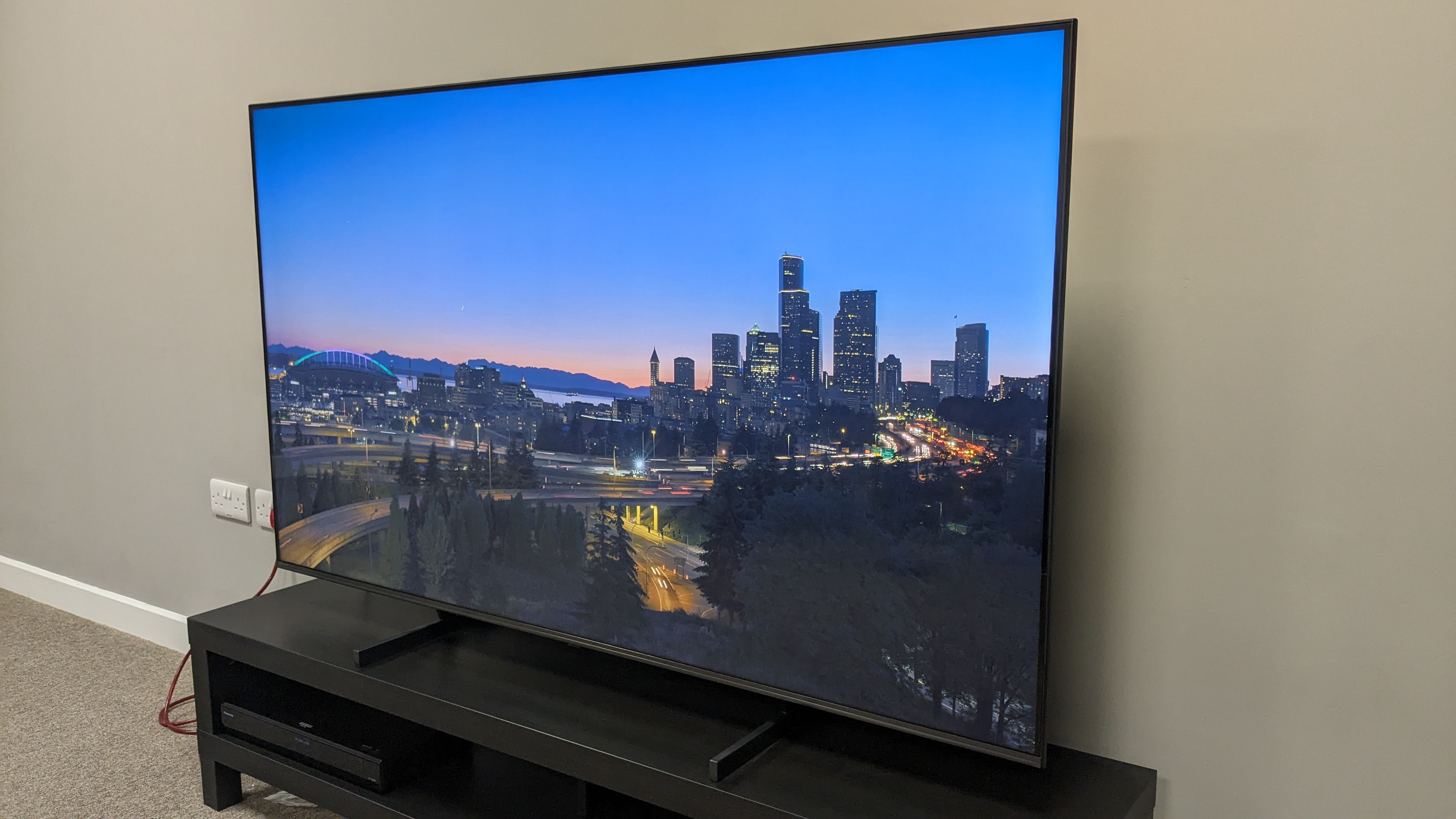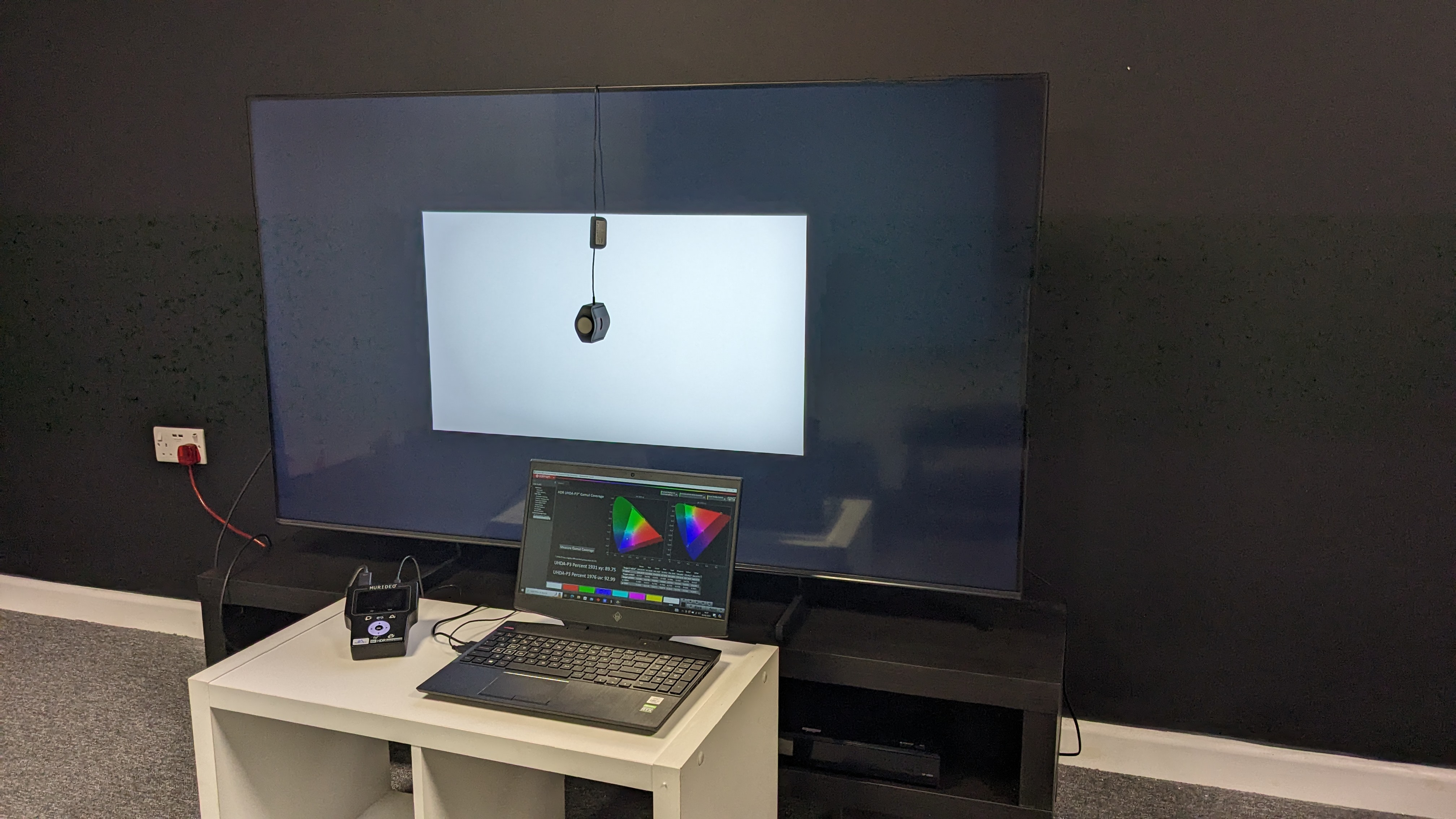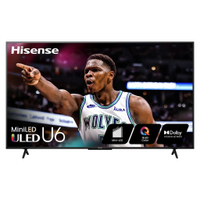The price of mini-LED 4K TVs is changing the game – just look at the record-low deal on this 75-inch model
Over $1,000 cheaper compared to OLED, and the gap will keep widening

2024 was quietly a revolutionary year for TVs, because the best mini-LED TVs suddenly went from being a premium tech that dabbled in dropping to mid-range, to being tech that reached all the way from premium down to the budget end, with a really solid option for everyone.
In the US, we raved about the Hisense U8N and the TCL QM851G for delivering unbelievable bang for your buck. The Hisense U7N quickly staked a place as top-value mid-range TV, with some unbelievable deals available, despite packing great brightness and 4K 120Hz support to complete with the best gaming TVs.
In the UK, we raved about the TCL C855K and the TCL C805K, the latter of which is obscenely inexpensive for something that looks that good.
If anything, the aggressive pricing on these TVs creates the issue of them nearly crashing into each other – we gave the Hisense U6N a less effusive score than the U7N or U8N, but that was mostly because it cost far too close to the U7N while offering a notable step down in features.
But over time, the U6N has started dropping to some absolutely ridiculous prices, and there's a deal on the 75-inch model right now that is absolutely the budget giant-screen mini-LED I'd buy if I were in the market for one.
Today's best deal on the Hisense U6N
The Hisense U6N is an impressive mini-LED screen, delivering bright images that are great for sports, TV and movies in particular. Mini-LED's control of contrast means the picture quality holds up across the huge screen of this 75-inch TV, unlike more basic TV panels. You don't get 4K 120Hz gaming, and the picture weakens if you sit too far off-center, but when it comes to bang for your buck in a big-screen TV, this is the best you can get at the time of writing.
• In the UK? Get the Hisense U6N 75-inch for £799 at Amazon UK
It's funny to think that the first mini-LED TVs only launched in 2021 – making them far, far younger than the 11 years that the best OLED TVs have been a staple of the TV market – and yet they've already moved from launching as a high-end only option to covering the whole range of budgets… something OLED has never managed, and doesn't look likely to any time soon.
OLED has certain high costs around the reliability and complexity of the manufacturing process that haven't been fundamentally solved, and the price simply can't come down much further while these continue. Even new inkjet-printed methods – which are finally beginning to become real for OLED monitors – look unlikely to solve this for TVs in the near term.
TCL, which is leading on this technique, told me there will still be manufacturing reliability problems with larger screens that mean it won't be as cost-effective for TVs immediately, so we won't see it used for that yet – though we might in a few years.
As a result, the cheapest 77-inch OLED TV you can get is the LG B4 for $1,796 – which is more than $1,000 pricier than the Hisense U6N. Yet the U6N has far superior full-screen brightness (though less-good contrast, viewing angles or gaming features).

Mini-LED, however, offers all kinds of ways for manufacturers to be flexible on price. For a start, they can change exactly how mini those mini-LEDs are, and how many of them there are. They can change how many different dimming zones they work in. They can use a different LCD pixel panel to bring the price down. And the cost of the parts themselves comes down as they become more common.
The technology doesn't need the delicate manufacturing touch that OLED does, and advancements to the technology don't always need to cost much, if any, more than the last version of the tech – the next big thing in mini-LED TVs is RGB backlighting, and Samsung told me that it doesn't expect its version of the tech to cost more than current mini-LED tech (though we'll see what happens in practice).
The TVs from 2024 that are still around may get cheaper again by the time they get replaced by the 2025 models – and the 2025 models will likely be the same kind of price, but with bolder colors and even more impressive contrast at all budgets. I've especially got my eye on the Hisense QM7K, which looked beautiful at CES 2025, will have a mid-range price, and will go all the way up to 98 inches.
@techradar ♬ original sound - TechRadar
I'm an OLED guy. I have an OLED TV at home that I recently upgraded, and that technology is where I find that the most interesting tech developments are happening – at least in terms of tech that's making it into fairly mainstream TVs.
But I do a lot of recommending of TVs for other people, and this is the year I found things really tipping in mini-LED's favor in most of my conversations. Not so much at the high end, but at the "You don't have to buy premium to get a seriously good experience, just look at these mid-range models" end. And then also at the low-end, where I find myself saying that you only need to spend a tiny bit more to get a big step up to a mini-LED set from a basic LED set, which will be a better long-term investment.
Mini-LED is only going to cement its place as the people's TV tech this year. A genuinely good 75-inch 4K TV for under $600? Hail to the king.
Get daily insight, inspiration and deals in your inbox
Sign up for breaking news, reviews, opinion, top tech deals, and more.

Matt is TechRadar's Managing Editor for Entertainment, meaning he's in charge of persuading our team of writers and reviewers to watch the latest TV shows and movies on gorgeous TVs and listen to fantastic speakers and headphones. It's a tough task, as you can imagine. Matt has over a decade of experience in tech publishing, and previously ran the TV & audio coverage for our colleagues at T3.com, and before that he edited T3 magazine. During his career, he's also contributed to places as varied as Creative Bloq, PC Gamer, PetsRadar, MacLife, and Edge. TV and movie nerdism is his speciality, and he goes to the cinema three times a week. He's always happy to explain the virtues of Dolby Vision over a drink, but he might need to use props, like he's explaining the offside rule.
You must confirm your public display name before commenting
Please logout and then login again, you will then be prompted to enter your display name.
